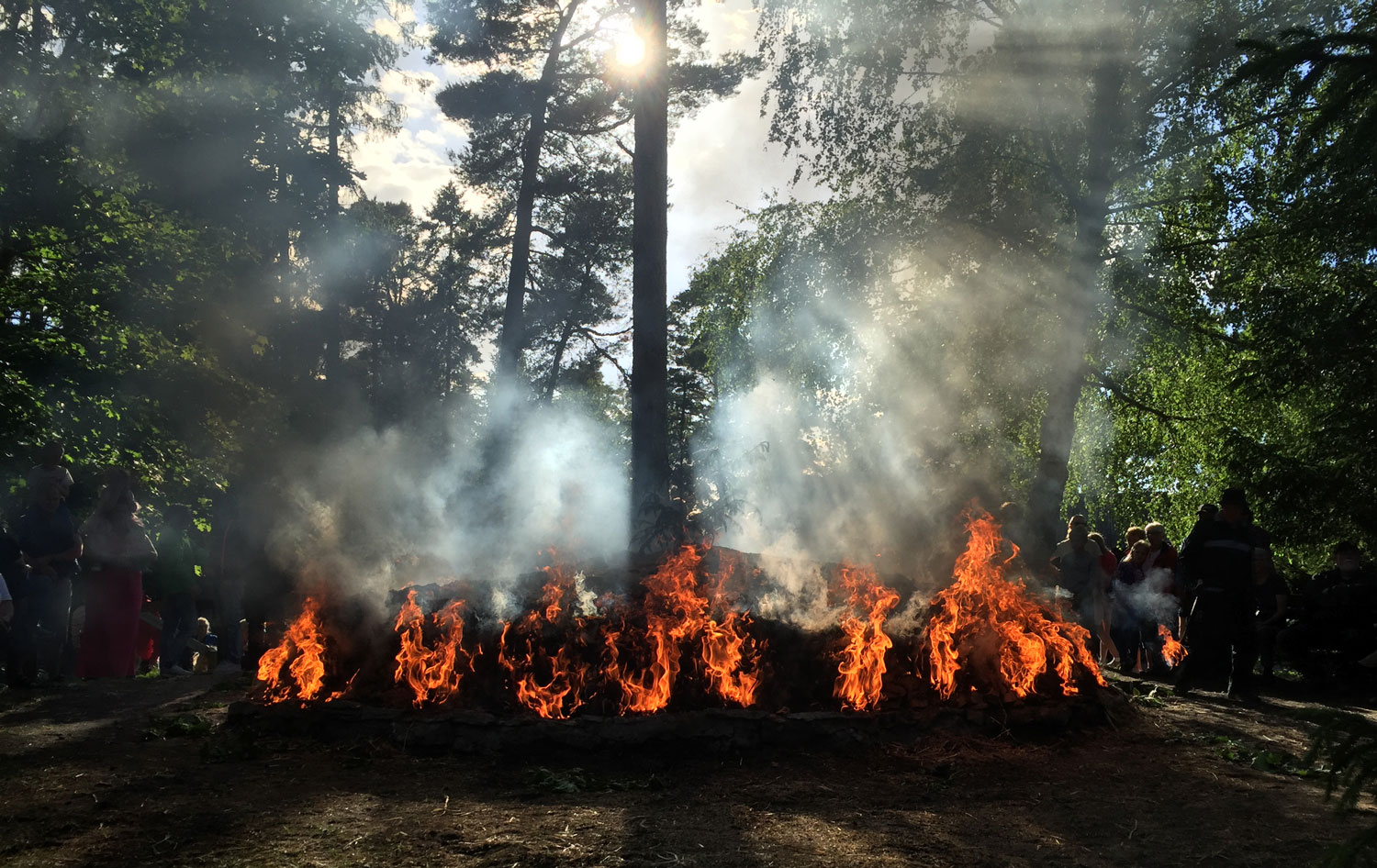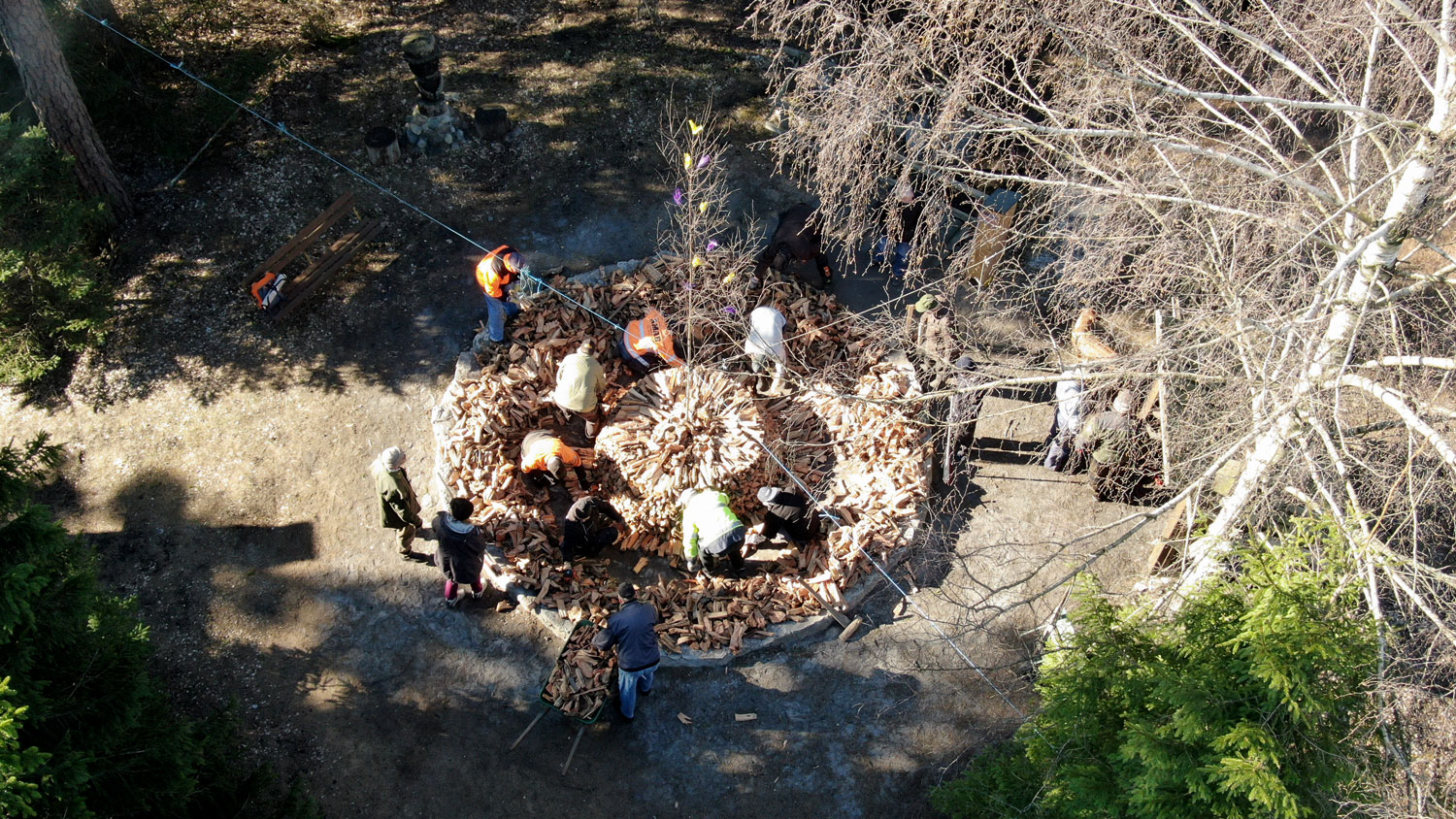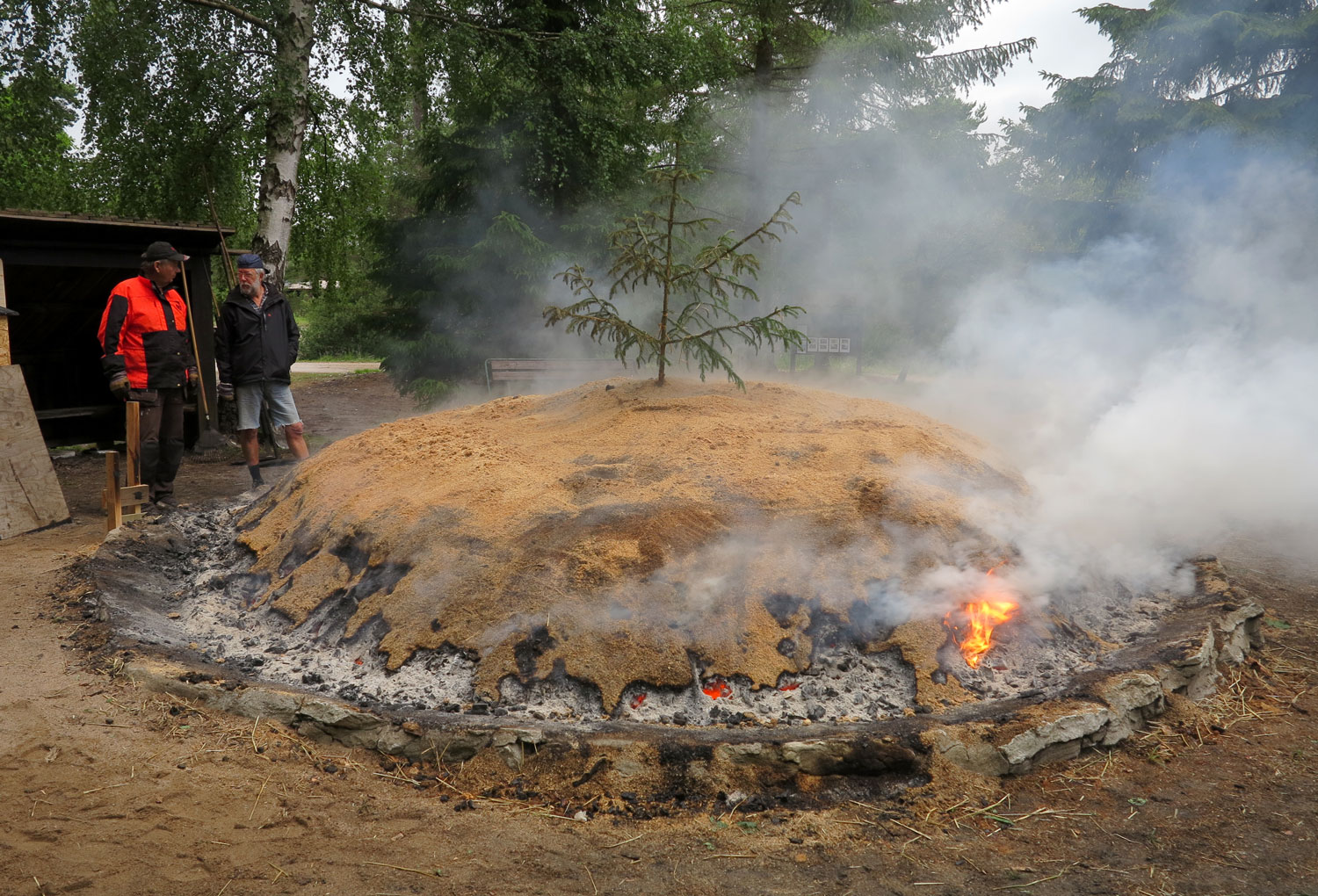- Startpage
- In English
- The Inventory
- Sojdesbränning – tar burning on the island of Gotland
Sojdesbränning – tar burning on the island of Gotland
The traditional production of pine tar on Gotland is part of a Scandinavian practice. Pine tar is burned in pits called “sojden”. Several active groups still carry out traditional tar burning on Gotland today.
Location: Gotland

Tar is traditionally burned in pits. The pit is made by digging a funnel-shaped hole in a sandy hill. Flat limestones are used to cover the pit. The surface is made up of small, flat pieces of limestone. In the center is a four-centimeter-wide opening. A hollow piece of wood is placed in the hole, leading the tar out of the pit. During the winter, tar-rich wood is collected and laid to dry until the summer, when the wood is burned to produce tar. While traditional pine tar burning is still practiced in other Scandinavian countries, the island of Gotland stands out for having many active groups of burners in a small region.
The tar-burning tradition on Gotland has ancient origins. Pine trees on Gotland are particularly suitable for producing tar. Until 1834, the farmers on Gotland had to pay part of their taxes in tar. As industrial production of tar grew during the late 19th century, small-scale tar burning diminished considerably.
On Gotland, the tar burning tradition has social and cultural importance. During the burning, the local community often comes together for food, drinks, and live music. Tar burning is still surrounded by rituals to scare off evil powers and promote a successful burn. The finished product is sold, and is mostly used as a wood preservative for boats and buildings.

Photo: Pär Malmros.

